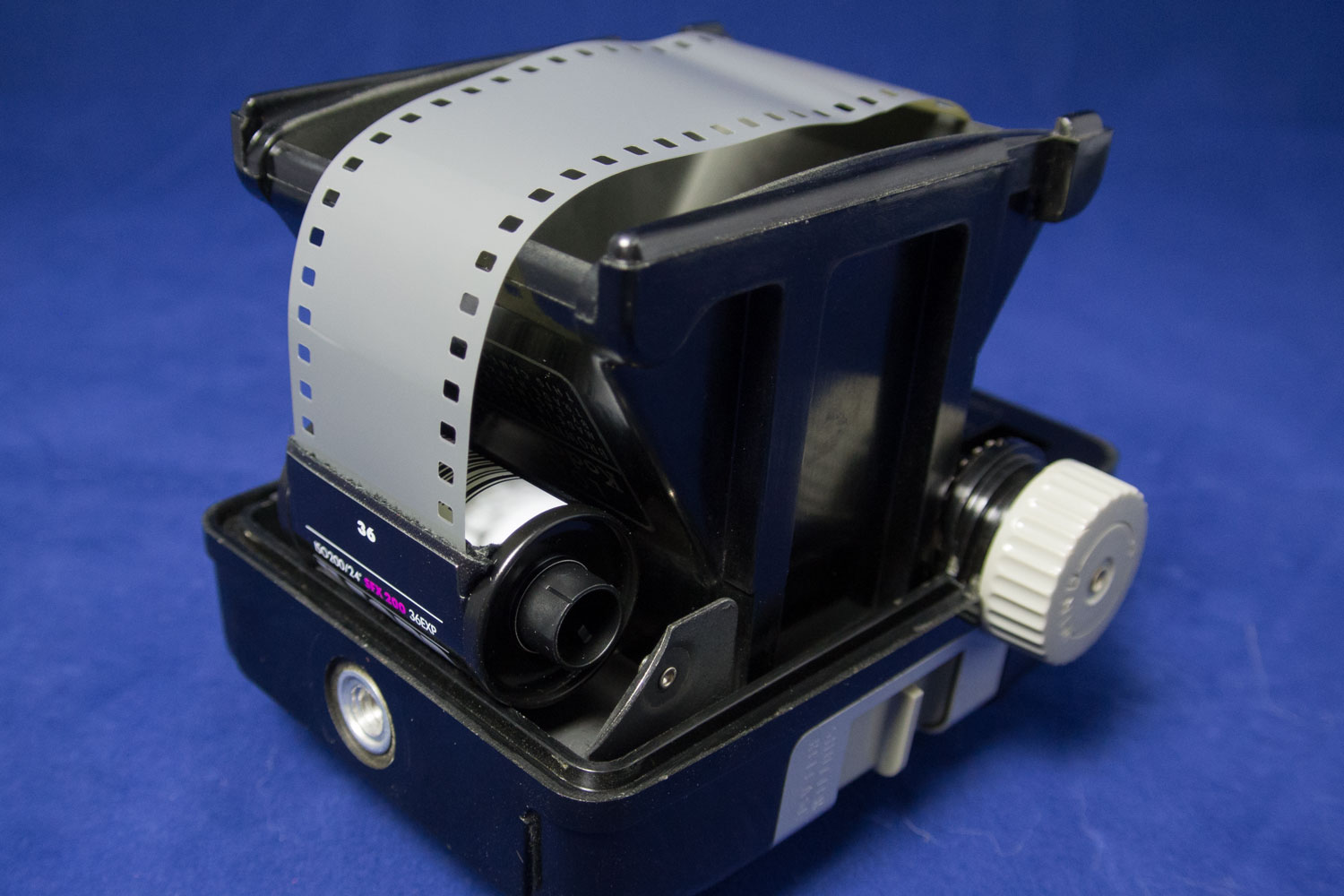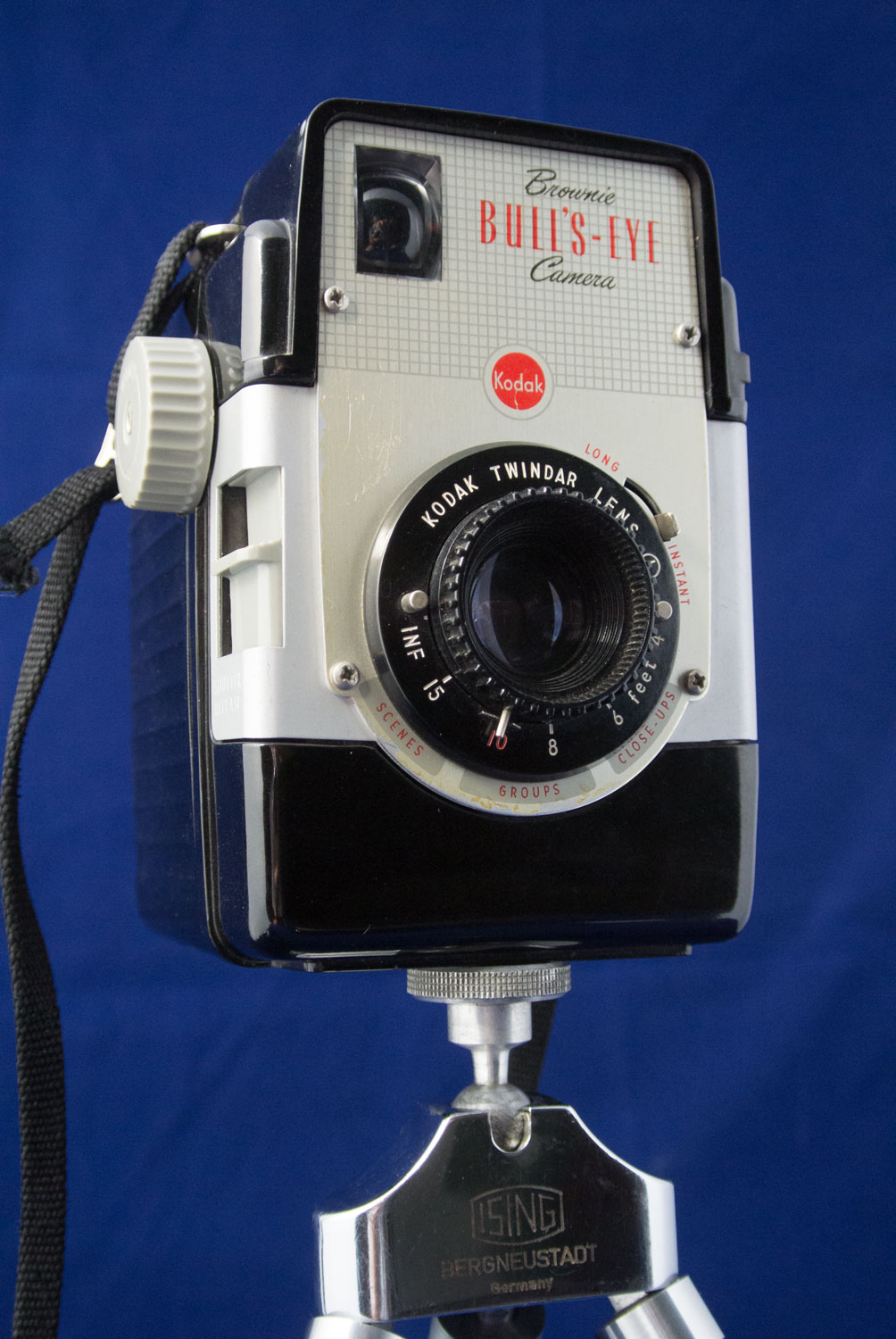The trickiest part of the project is dealing with the mechanical realities - ignoring the "Use 620 film only" proclamation. The following imagery will demonstrate the film loading process.
First, we need to figure out how to advance the film. The 620 format film for this camera had a paper backing with printed numbers. As the Wind knob is turned, the numbers magically appeared in a small red window. Without that reference, exposures would overlap, or film would be wasted. Since the 35mm film we will use does not have a paper backing, we need to figure out how far to turn the mysterious wind knob.
Cut a 12 inch strip of paper, perhaps an inch in width - and thread the end into the take-up spool.
Mark the limits of the exposure area.
Note the position of the WIND knob, and turn it one revolution. Note that the film has moved approximately one-third of the distance across the exposure area.
Two turns, a little more...
Three turns... almost there. Film is thicker than paper, so this is not an exact art. Film tension and thickness will cause the take-up diameter to vary as film is wound onto the spool. I will use 3-1/2 turns with this camera. This leaves sufficient space between exposures. Typically, I get seven exposures, on 36 exposure 35mm rolls, from various cameras.
Next, load the film. Usually, I use Kodak TMax 100. The film illustrated here is some Ilford SFX 200. This camera does not have an aperture adjustment. The fixed shutter and aperture were designed for slower film of the past, so this faster film is better suited for images in shaded areas. There is some exposure latitude, so I will try exposures under different lighting conditions.
Note how the 35mm canister fits neatly within the supply-side film area. Drag the end of the film over the edge...
...and onto the take-up spool. I centered the film. Note that the film may wander to one side or the other during use. That might serve as a value-added artistic feature...
Another view of the loaded film.
Remember the secret red window? We need to cover this up before closing the camera for use.
I placed some paper over the plastic window. They are fragile. If preserving the camera is not important, don't worry about it.
Final assembly.
Almost ready to go!
Once the cover is in place, remember to advance the film prior to the first exposure. A lot of film was exposed to the light, since we had to pull out a lot of it for loading. To account for that total length, I turned the wind knob five revolutions.
I positioned the film through the center of the exposure area. Remember to compose you image for this narrower film.
A sample from an old Kodak box camera. Click for a larger view.
The last tricky bit... unloading the film. The old paper-backed film formats were simply wound off of the supply spool. Since we are using 35mm film, it is not possible to simply wind it back into the film canister. Rats! As you make exposures, wind the film slowly until you feel the film stop. You will have to create some sort of home darkroom. In complete darkness - not a hint of light - you will have to open the camera and remove the film canister and take-up spool. Then, you can manually turn the 35mm spool to rewind the film into the canister. Send the film off to the lab - and wait.
In a future post, I will display images from this camera.














